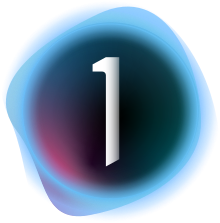Capture One
 | |
| Developer(s) | Capture One |
|---|---|
| Stable release | 15.0.0
/ December 9, 2021 |
| Operating system | Windows, macOS |
| Type | Image editing |
| License | License subscription |
| Website | www |
Capture One (also known as Capture One Pro) is a photo editing software, developed by Phase One. In addition to image editing it performs image cataloguing, raw image file processing, and tethered photography.[1] Capture One works with raw files from many different digital cameras as well as TIFF, PSD, JPEG, and DNG image files. Since 2020, Capture One has operated as it an independent entity.
Features[]
Capture One 21 is available for macOS and Microsoft Windows. It is localized for Chinese (simplified), Czech, English, French, German, Italian, Japanese, Korean, Spanish and Swedish.
There is a version available for owners of digital camera backs from Phase One, Mamiya, and Leaf called Capture One for Phase One (digital back only).
Versions of the software that work only with Sony, Fujifilm or Nikon digital camera raw images are available called Capture One (for Sony)/Fujifilm/Nikon or the free versions called Capture One Express (for Sony)/Fujifilm/Nikon.
Features include[2] film grain, healing and cloning tool, Layers, keystone correction, black and white conversion, ability to print directly from Capture One, and extension to iPad and iPhone with Capture Pilot,[3] noise reduction, color correction, spot removal, High Dynamic Range tools, lens tools and sharpening tools.
Version history[]
- Capture One 22 — December 2021 - Panorama, HDR merge, Wireless Tethering for Canon, Auto Rotate for horizons
- Capture One 21 — December 2020 - Speed Edits, new Dehaze tool, ProStandard ICC profiles, revamped importer, easy brush adjustments, Leica tethering, HEIF file support
- Capture One 20 — December 2019 - New Healing tool, new Basic Color Editor, High Dynamic Range Tool, improved noise reduction, scrolling tools, improved Crop Tool, support for DNG files, support for copying layers and masks, interface improvements, image culling tools and new keyboard shortcuts.
- Capture One 12 — November 2018 - New User Interface, Luminosity Mask, Linear Gradient Mask, Radial Gradient Mask, Plug-in Capabilities, Fujifilm Film Simulations
- Capture One 11 – November 2017 - New Annotations tool, Layers integration and Masking versatility.
- Capture One 10 – December 2016 - New Camera Focus tool, new Filter for orientation of images, more Apple Script properties, Optimized for Jpeg Output, LCC for 100MP, move folders in catalogs, compressed raw support, auto masking and openCL default. New lens and camera body support.[10]
- Capture One 9 – November 2015 - Improved DNG color treatment, Luma curves and local curves, revised contrast algorithms and asset management tools.
- Capture One 8 – September 2014 - Improved image quality, repair layers, film grain, local white balance, improved user interface.[9]
- Capture One 7 – Catalogs, advanced OpenCL
- Capture One 6 – December 2010[8]
- Capture One 5 – October 2009 Capture One 5 PRO, Capture One 5 DB, Capture One 5.[7]
- Capture One 4 – Capture One 4 PRO, Capture One 4 DB, Capture One 4 – first in December 2007[5] and in October 2008 for the PRO version,[6]
- Capture One 3
- Capture One PRO, Capture One DB, Capture One LE
Timeline[]
- 2003: The independent Capture One brand was established, when we began supporting other camera brands
- 1994: Capture One was only a raw conversion and tethering tool for Phase One cameras
References[]
- ^ "Phase One Capture One Pro 10". TechRadar. Retrieved 2018-08-28.
- ^ English. "Capture One Pro 9 Imaging Software". PhaseOne. Retrieved 2016-01-06.
- ^ "New features in Pro 9". Captureonecomplete.com. Archived from the original on 2015-12-22. Retrieved 2016-01-06.
- Photo software
- Image organizers
- Raw image processing software
- Proprietary cross-platform software
- Windows graphics-related software
- MacOS graphics software